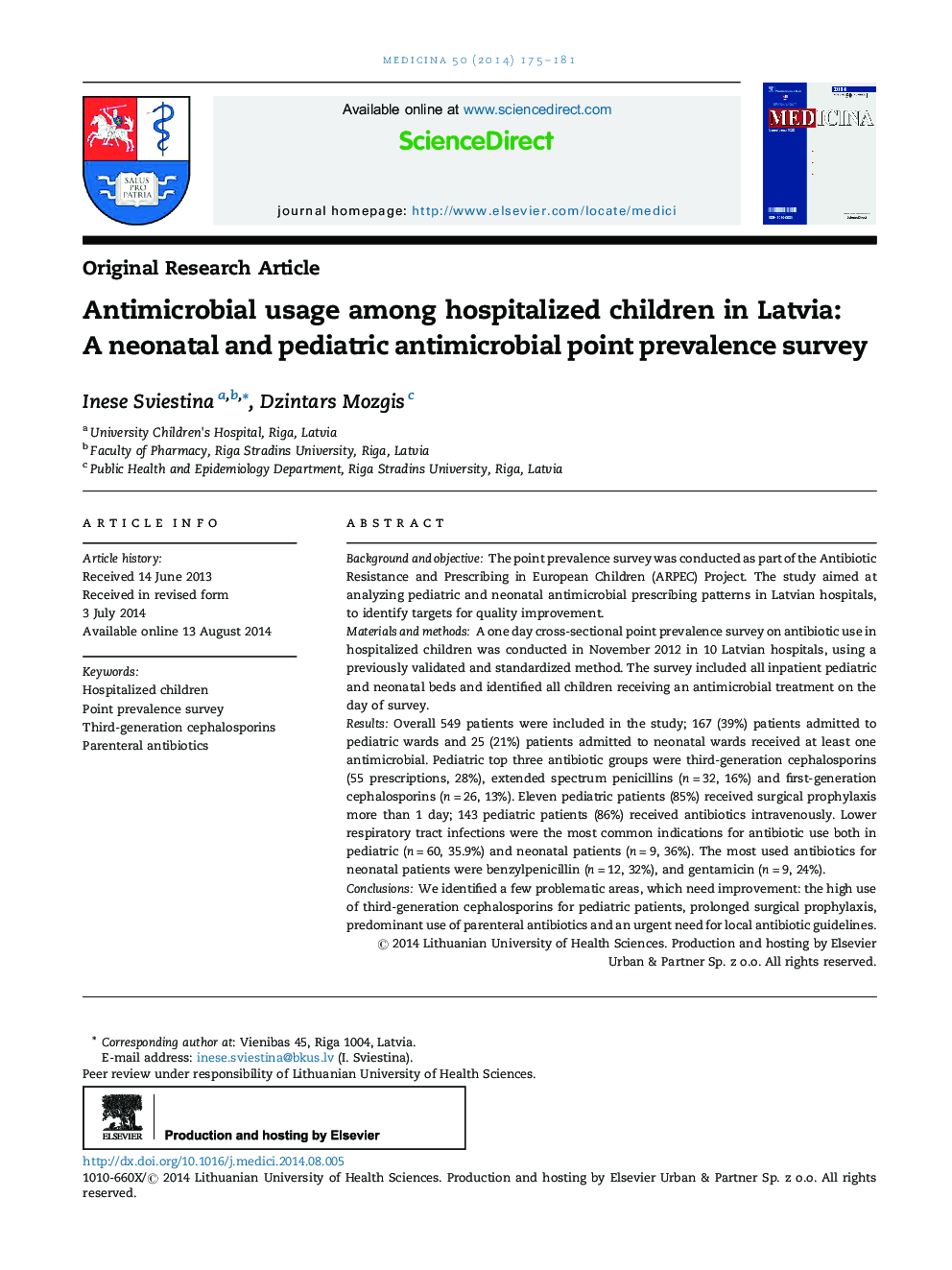| Article ID | Journal | Published Year | Pages | File Type |
|---|---|---|---|---|
| 2685290 | Medicina | 2014 | 7 Pages |
Background and objectiveThe point prevalence survey was conducted as part of the Antibiotic Resistance and Prescribing in European Children (ARPEC) Project. The study aimed at analyzing pediatric and neonatal antimicrobial prescribing patterns in Latvian hospitals, to identify targets for quality improvement.Materials and methodsA one day cross-sectional point prevalence survey on antibiotic use in hospitalized children was conducted in November 2012 in 10 Latvian hospitals, using a previously validated and standardized method. The survey included all inpatient pediatric and neonatal beds and identified all children receiving an antimicrobial treatment on the day of survey.ResultsOverall 549 patients were included in the study; 167 (39%) patients admitted to pediatric wards and 25 (21%) patients admitted to neonatal wards received at least one antimicrobial. Pediatric top three antibiotic groups were third-generation cephalosporins (55 prescriptions, 28%), extended spectrum penicillins (n = 32, 16%) and first-generation cephalosporins (n = 26, 13%). Eleven pediatric patients (85%) received surgical prophylaxis more than 1 day; 143 pediatric patients (86%) received antibiotics intravenously. Lower respiratory tract infections were the most common indications for antibiotic use both in pediatric (n = 60, 35.9%) and neonatal patients (n = 9, 36%). The most used antibiotics for neonatal patients were benzylpenicillin (n = 12, 32%), and gentamicin (n = 9, 24%).ConclusionsWe identified a few problematic areas, which need improvement: the high use of third-generation cephalosporins for pediatric patients, prolonged surgical prophylaxis, predominant use of parenteral antibiotics and an urgent need for local antibiotic guidelines.
